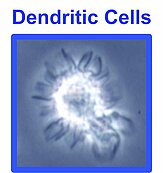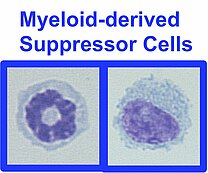Projects
The Lutz lab is interested to answer the following questions:
Dendritic Cells (DCs)
We have described an improved protocol to generate bone marrow-derived DCs (BM-DCs) as a model for monocyte-derived DCs (MoDCs) using GM-CSF (Lutz et al., 1999). These BM-DCs but also endogenous subsets of conventional DCs (cDCs) have been studied over the years and are still current topics to address the following questions:
- What are the molecular tools of BM-DCs and cDCs to induce CD4+ T cell tolerance such as T cell anergy or regulatory T cells (Tregs) in vitro and in vivo after injection?
- How do in vitro generated GM-CSF DCs compare to Flt3L cDC subsets?
- How can BM-DCs induce polarized CD4+ T helper cell immune responses (Th1, Th2, Th17) in vitro and in vivo after injection?
- How do conventional DC (cDC) subsets of the skin induce Tregs under steady state conditions in vivo?
Animal models for autoimmunity (EAE) and allergy (OVA asthma) are in use to explore the therapeutic potential of BM-DCs/MoDCs.
Myeloid-derived Suppressor Cells (MDSCs)
Two major subsets of granulocytic (G-MDSCs) and monocytic MDSCs (M-MDSCs) are known. We have described the first protocol to generate both MDSC subsets in vitro with GM-CSF from bone marrow precursors (Rossner et al., 2005). We used these cells to investigate the following questions:
- What is the origin of M-MDSCs in vitro and in vivo?
- Which signaling pathways are required to induce MDSCs?
- Which signaling pathways need to be blocked to inhibit their development or function under unwanted conditions (tumor, chronic mycobacterial infection)
- What are the molecules that direct MDSC migration and homing in vivo?
Refrerences
Lutz, M.B., N. Kukutsch, A.L. Ogilvie, S. Rossner, F. Koch, N. Romani, and G. Schuler. 1999. An advanced culture method for generating large quantities of highly pure dendritic cells from mouse bone marrow. J Immunol Methods 223:77-92.
Rossner, S., C. Voigtlander, C. Wiethe, J. Hanig, C. Seifarth, and M.B. Lutz. 2005. Myeloid dendritic cell precursors generated from bone marrow suppress T cell responses via cell contact and nitric oxide production in vitro. Eur J Immunol 35:3533-3544.
For more detailed reading:








